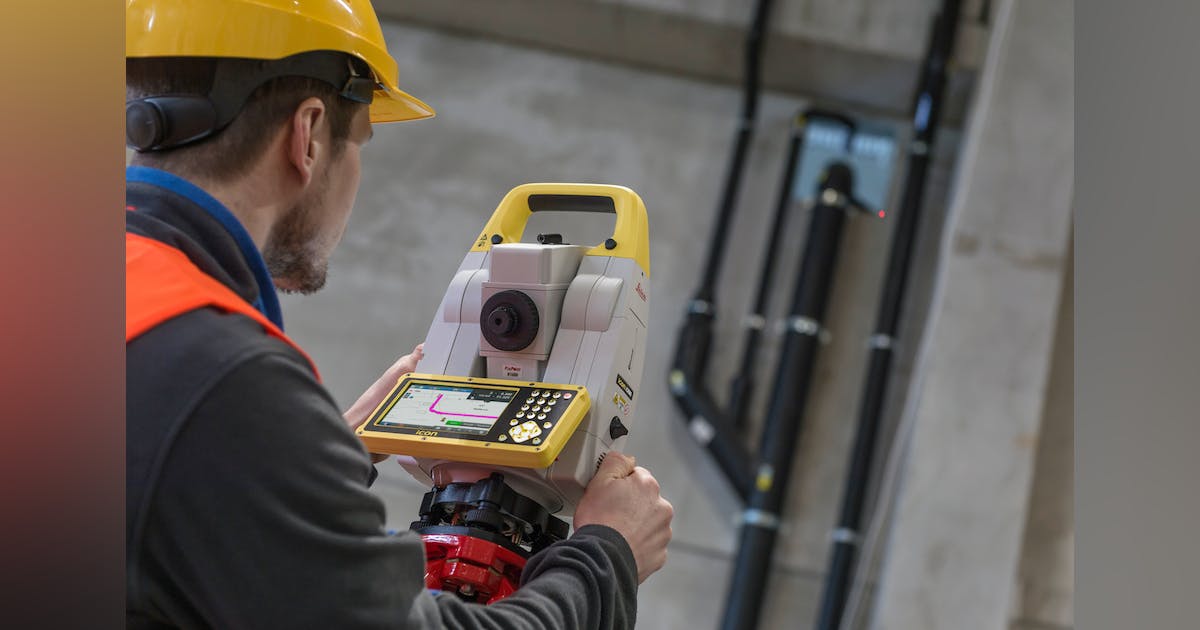By Shane O’Regan
Building Information Modeling (BIM) technology is not a cure-all for the construction industry. But a growing body of evidence shows that BIM offers project stakeholders a new order of construction precision and understanding, starting with unprecedented data and visualization collaboration across all trades.
Large, complex construction projects have no room for mistakes and every millimeter of deviation can make a big difference. Robotic solutions can help minimize errors and reduce rework by ensuring layout and measurement within tolerances for your tasks without sacrificing speed or productivity.
Against this rising digital-first backdrop is an army of specialty contractors in the mechanical, electric and plumbing (MEP) trades. Some determinedly embrace the new normal. Others continue to weigh their cost-benefit options against familiar, albeit fading, analog measurement practices. With their central role in the life of any building project, MEP contractors are always in a prime position to be some of the first movers for adopting new technologies.
Going All-in
For MEP delivery specifically, there are a number of other reasons which position it centrally in the BIM ecosystem. Take layout, for example. It’s not getting any easier for MEP layout teams to capture distances and angles for hanger, anchor, sleeve, box, pipework, cable trays and other building-service components, especially with today’s curved, nonlinear building designs. The demands of prefabricated assemblies also require tolerances that push traditional measuring tools such as the tape measure, string and theodolite to extremes.
The chances of error can be high. Is the tape measure steady? Is that really the best reference point? Does the string mimic the curve? Even a minor measurement error can echo downstream in unexpected ways. Small wonder construction budgets and insurance policies typically anticipate measurement errors and omissions.
Robotic Total Station
The significance of digital measurement technology is its unerring ability to pinpoint layout coordinates directly from the BIM model, taking the all-too-error-prone strings, tape measures and plumb lines off the table. For example, data can be transmitted back to the office to verify precise placement of the layout positions and enables quicker decision making based on millimeter accurate true field data.
Real-World Examples
With automation, laser-placed precision, and single-operator ease come speed. Ryan Hoggatt, director of manufacturing for UMC, a full-service MEP contracting company based in Washington state, knows the before and after well. “We were working on a clean room facility that was modeled for miles and miles of under-floor piping. They initially wanted us to hand draw the detailing because of a schedule issue. That would have taken hundreds of hours. Our operator went out and scanned the floor and brought the data back. We accomplished in less than a week what would have taken at least a month. All in 3D, too. Now the client wants the entire facility scanned.”
Hoggat also described how its decision to invest in a digital measurement tool was born out of necessity. The day of reckoning arrived after completing a grueling boiler room upgrade for Boeing, which required the fabrication of thousands of spools. “I basically said there’s got to be a better way than tapes and lasers,” he said.
Miller Electric Co. is the nation’s largest and oldest electrical contractor, working in all 50 states. Similar to UMC, Miller depends on the fabrication of large off-site modules using the BIM model. Alan Creel, vice president of pre-construction services for Miller, explained: “If we’re certain we are designing and installing precisely, then we’re able to quickly install much larger coordinated assemblies. We’re getting larger with every project.”
That growing confidence stems from a robotic total station. Miller is often the first to install its assemblies on the job site. That puts it at a measurement disadvantage. Many of the reference points one might ordinarily expect, such as HVAC ductwork, aren’t installed. That exposure prompted the robotic total station investment.
Creel added, “We can lay out in an empty field with no need for string lines, tapes or offsetting. It’s made a big difference in the way we work. We now train all our union electricians to use the robotic total station. We think it’s essential to our trade.”
The Sack Company, based in Statesboro, is a full-service MEP contracting company that has served the Southeast United States for 76 years. It used modeling and layout technology as needed but hesitated to acquire in-house robotic total station capability until a recent school construction project. To test the new device, the company used it to double-check what it had previously laid out by string and tape. The robotic total station identified several errors that were fixed before installation.
“Being able to see things in a 3D environment makes it easier to understand what you are looking at. Rather than going through hundreds of pages of design documents, you turn on a tablet. Using the robotic total station ties our work together with BIM, which saves us time and money and reduces overall project risks,” said Brandon Spainhour, the company’s BIM/CAD coordinator. “We have one person dedicated to the robotic total station. No one is taken off a crew to digitally measure.”
Conclusion
MEP contractors’ need for placement and fabrication speed and precision makes them logical BIM advocates. They play a central role in the life of any building project. Their detailing, installation and fabrication tasks must coordinate with the consultant’s 3D model, making them especially reliant on BIM methodologies for a successful project delivery.
The MEP contractors’ enabling tool—the robotic total station—is crucial for coordinating design changes to the MEP office team in real time from the field. Clashes are resolved faster and more accurately, eliminating costly project delays and rework liability.
Shane O’Regan is Director iCON, Building Construction Field Portfolio for Leica Geosystems, part of Hexagon. Hexagon’s Geosystems division provides a comprehensive portfolio of digital solutions that capture, measure, and visualize the physical world and enable data-driven transformation across industry ecosystems.
